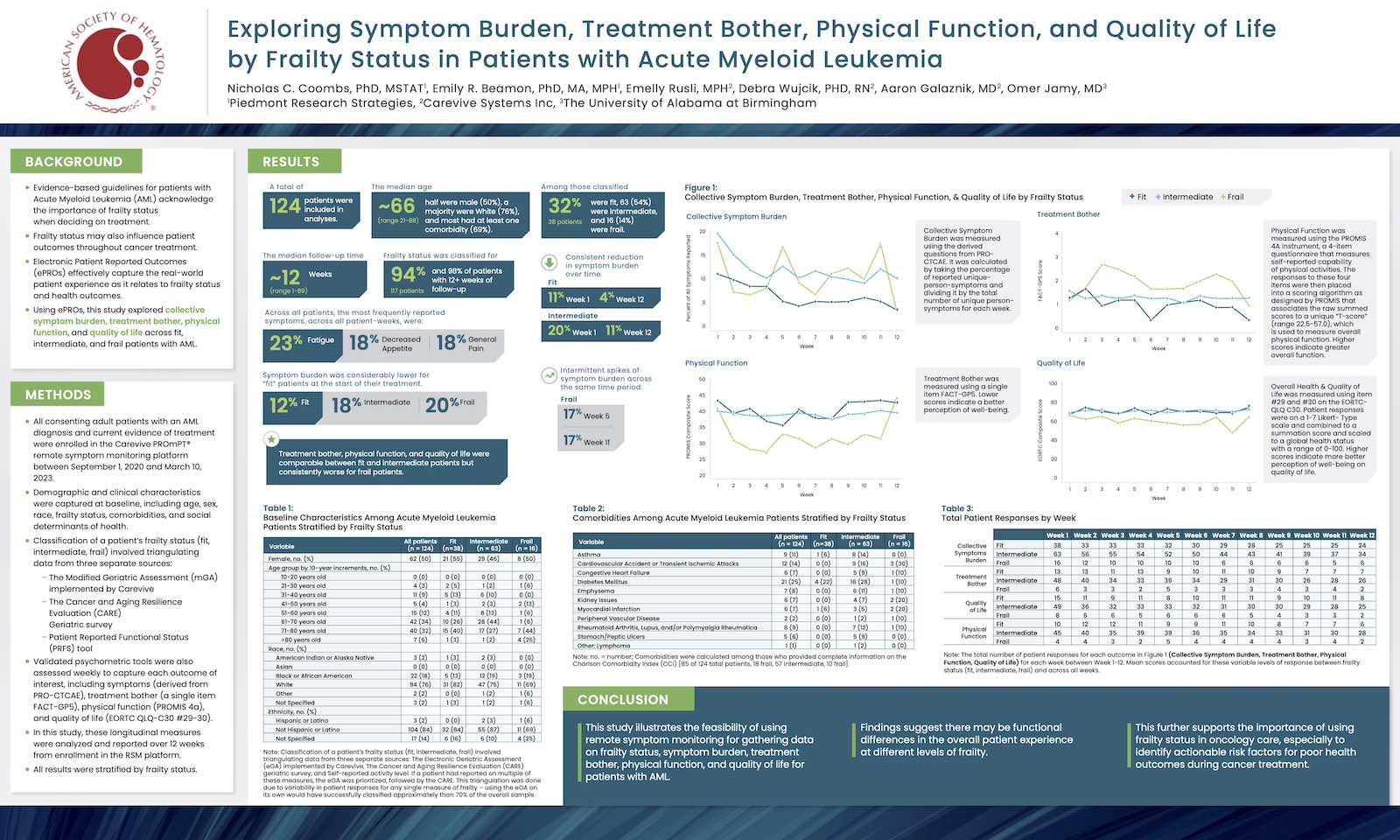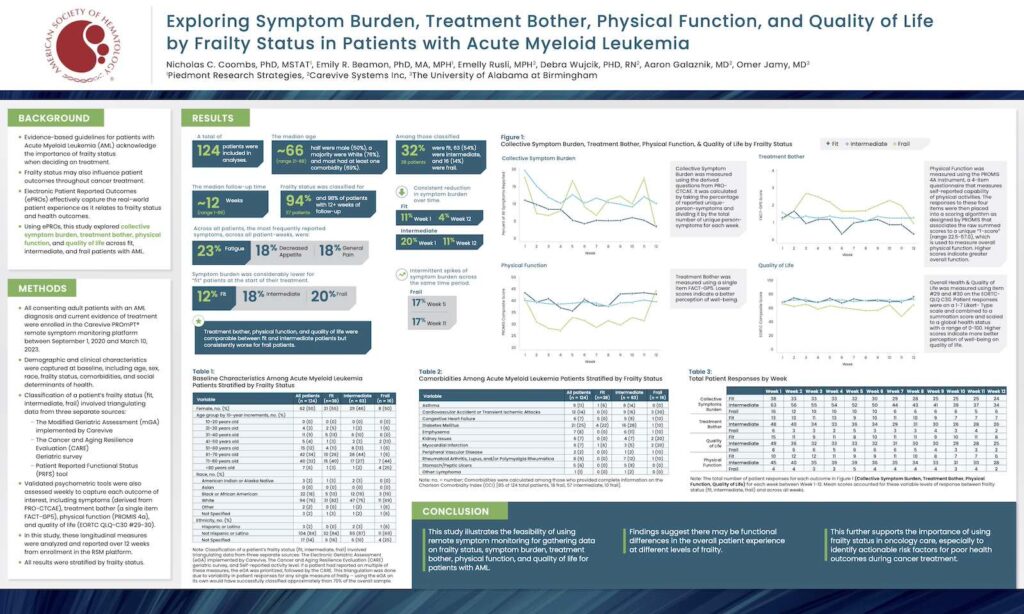
Authors: Nicholas C. Coombs, PhD, MSTAT1 , Emily R. Beamon, PhD, MA, MPH1 , Emelly Rusli, MPH2, Debra Wujcik, PHD, RN2, Aaron Galaznik, MD2, Omer Jamy, MD3
1Piedmont Research Strategies, 2Carevive Systems Inc, 3The University of Alabama at Birmingham
Background
- Evidence-based guidelines for patients with Acute Myeloid Leukemia (AML) acknowledge the importance of frailty status
when deciding on treatment. - Frailty status may also influence patient outcomes throughout cancer treatment.
- Electronic Patient Reported Outcomes (ePROs) effectively capture the real-world patient experience as it relates to frailty status and health outcomes.
- Using ePROs, this study explored collective symptom burden, treatment bother, physical function, and quality of life across fit, intermediate, and frail patients with AML.
Methods
- All consenting adult patients with an AML diagnosis and current evidence of treatment were enrolled in the Carevive PROmPT® remote symptom monitoring platform between September 1, 2020 and March 10, 2023.
- Demographic and clinical characteristics were captured at baseline, including age, sex, race, frailty status, comorbidities, and social determinants of health.
- Classification of a patient’s frailty status (fit, intermediate, frail) involved triangulating data from three separate sources:
- The Modified Geriatric Assessment (mGA) implemented by Carevive
- The Cancer and Aging Resilience Evaluation (CARE)
Geriatric survey - Patient Reported Functional Status (PRFS) tool
- Validated psychometric tools were also assessed weekly to capture each outcome of interest, including symptoms (derived from PRO-CTCAE), treatment bother (a single item FACT-GP5), physical function (PROMIS 4a), and quality of life (EORTC QLQ-C30 #29-30).
- In this study, these longitudinal measures were analyzed and reported over 12 weeks from enrollment in the RSM platform.
All results were stratified by frailty status.
Conclusion
- This study illustrates the feasibility of using remote symptom monitoring for gathering data on frailty status, symptom burden, treatment bother, physical function, and quality of life for patients with AML.
- Findings suggest there may be functional differences in the overall patient experience at different levels of frailty.
- This further supports the importance of using frailty status in oncology care, especially to identify actionable risk factors for poor health outcomes during cancer treatment.

